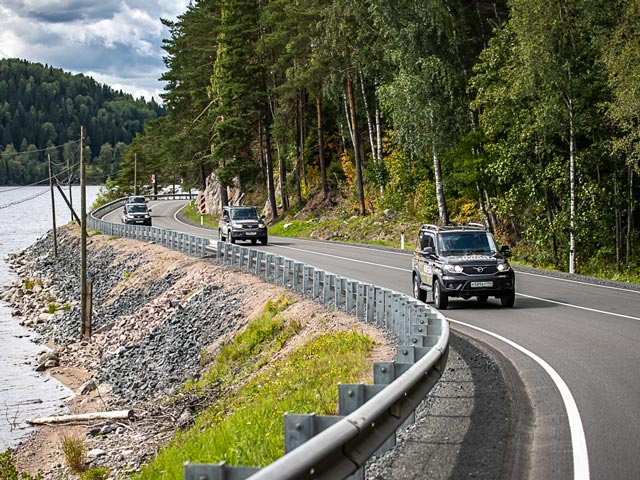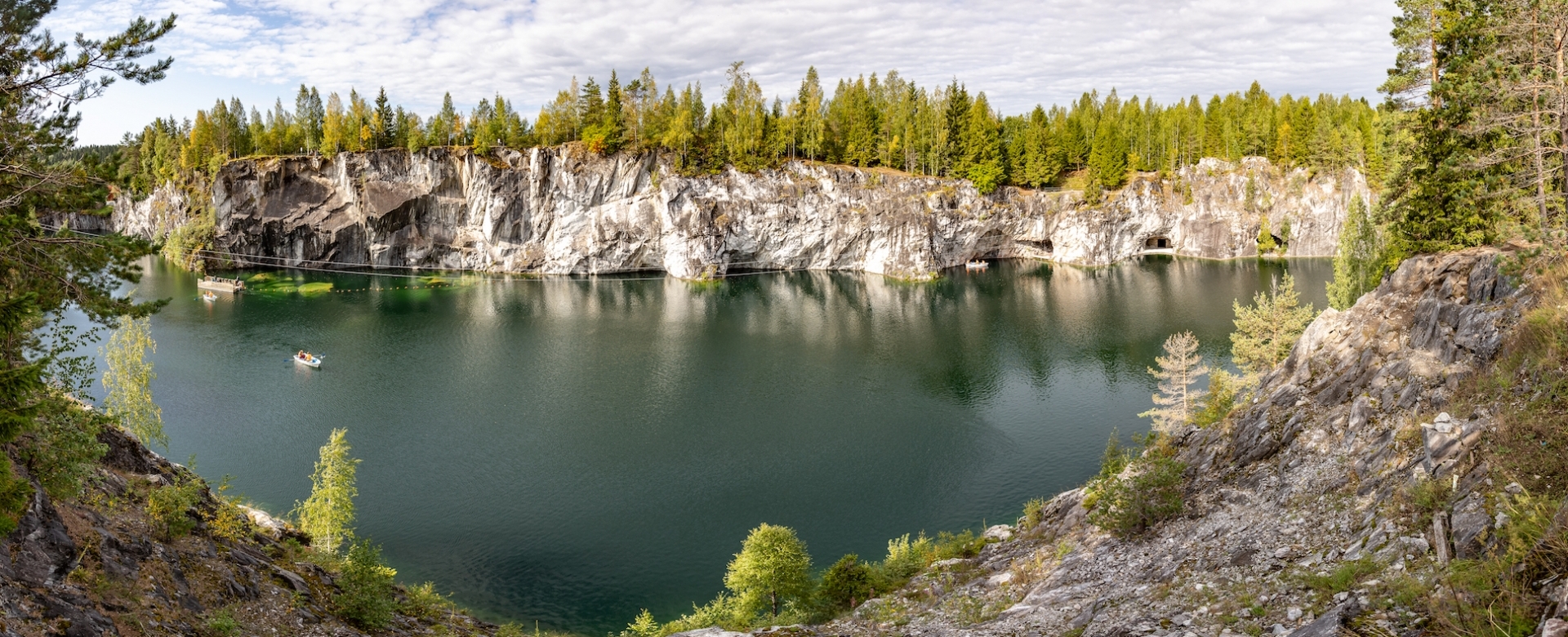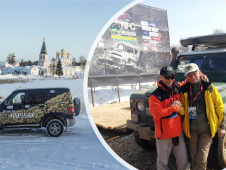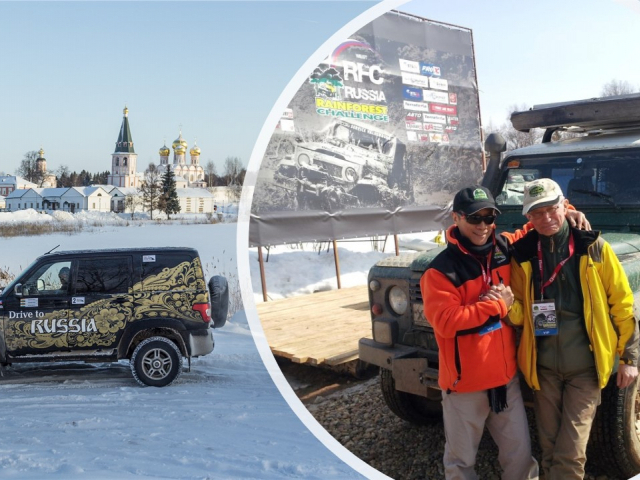

Ruskeala Mountain Park
The history of the Ruskeala marble canyon started a long time ago - about 400 years have passed since. These parts were ruled by Sweden then, and the Swedish were the first to mine marble here. After the Northern War ended in 1721, the northern bank of Ladoga along with the marble quarry was handed over to Russia. During the reign of Catherine II, the marble mining was restarted; as St. Petersburg was being actively built, vast demand for the expensive stone grew.
Walking around the Northern Capital now, you never cease to wonder how widely the Ruskeala stone is used. The marble from the Ruskeala canyon was used in the decoration of St. Isaac's Cathedral, the floors of the Kazan Cathedral, the windowsills of the Hermitage, the frameworks of the Marble Palace, the facades of the Mikhailovsky castle. Ladozhskaya and Primorskaya stations of St.Petersburg metro were adorned with it in 1970-80s as well.
Marble had been mined on mount Belaya by drilling and blasting since 1769. Holes were drilled in the rocks to be filled with gunpowder and blown up. Large pieces of marble would break off from the cliff and fall to the bottom of the pit. This is where the stonemasons began their work, shaping the stone. With the onset of winter and snowfalls, several dozen horses were harnessed to a well-made sled, and the valuable cargo was dragged to the place called Helylä (near Sortavala), where the stone would stay for several months before the navigation began in spring, to be then transported to St.Petersburg.
Over the next few decades, the canyon had been closed and reopened several times. In the 1820s, marble powder was used for the production of construction lime. Mining continued in small volumes until the 1990s. After the stone extraction at the quarry stopped, it was naturally filled up with water.

Nowadays Ruskeala Mountain Park has become one of the most striking and amazing places in the Northern Ladoga region. The heart of the Park is located in the marble canyon. The old abandoned quarry, which had served as a source of stone for almost four centuries, has now been turned into a wonderful attraction of Karelia, even included in the list of cultural heritage of Russia. The huge bowl of the canyon, carved out of marble, stretches for 456 meters in length and 109 meters in width.
The canyon is connected to former adits, which were fully or partially flooded and turned into marble grottoes of stunning beauty. The water temperature here rarely rises above 15 degrees Celsius. This is why algae never blooms here and the water always remains transparent. The canyon is framed by steep cliffs towering 25 meters above the water mirror. The man-made bowl in a solid array of marble, cut through by a system of mines, tunnels and drifts, reaches 456 meters in length and 109 meters in width. It is a unique structure, serving as a monument of industrial history as well, a monument to the impressive labour put in by all ethnic groups of the region, Russians and Swedes, Finns and Karelians alike.
Ruskeala has carefully preserved the exotic mosses, lichens, orchids and shrubs listed in the Red List of Threatened Species for the tourists to see; one can also observe rare species of reptiles, amphibians and bats here. Majestic and beautiful, the quarry regularly acts as a magnificent decoration for cinema production and music festivals, and annually attracts tens of thousands of tourists from around the world.
Fixed-date departure tours
Other current toursBest overland tours In Russia and CIS countries
Fly and Drive
Unique tours of the great cities, unknown places, winter and summer drive experiece
Overland Expeditions
We provide: logistics, paperwork, escort and local guide services











